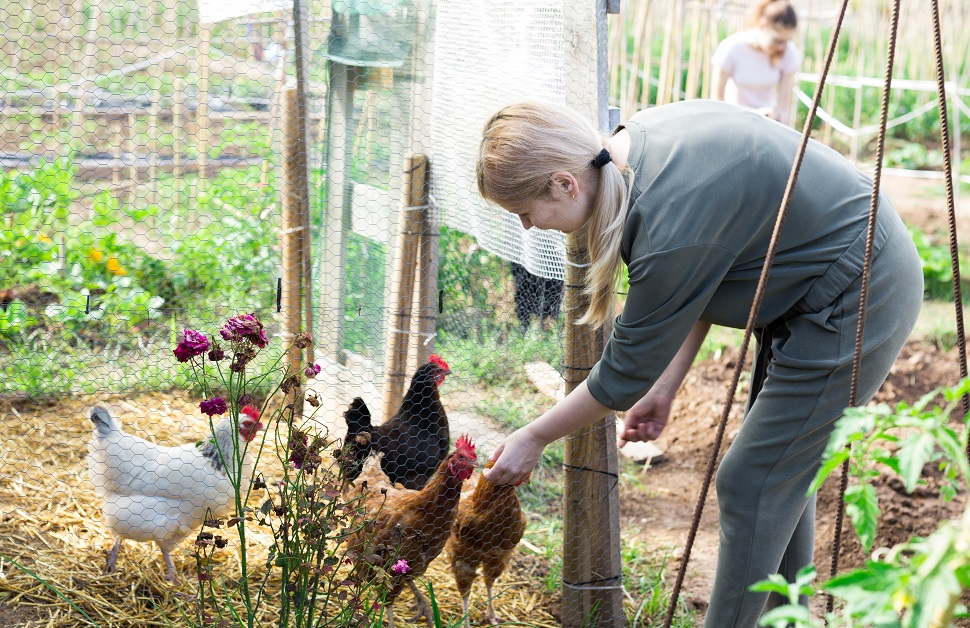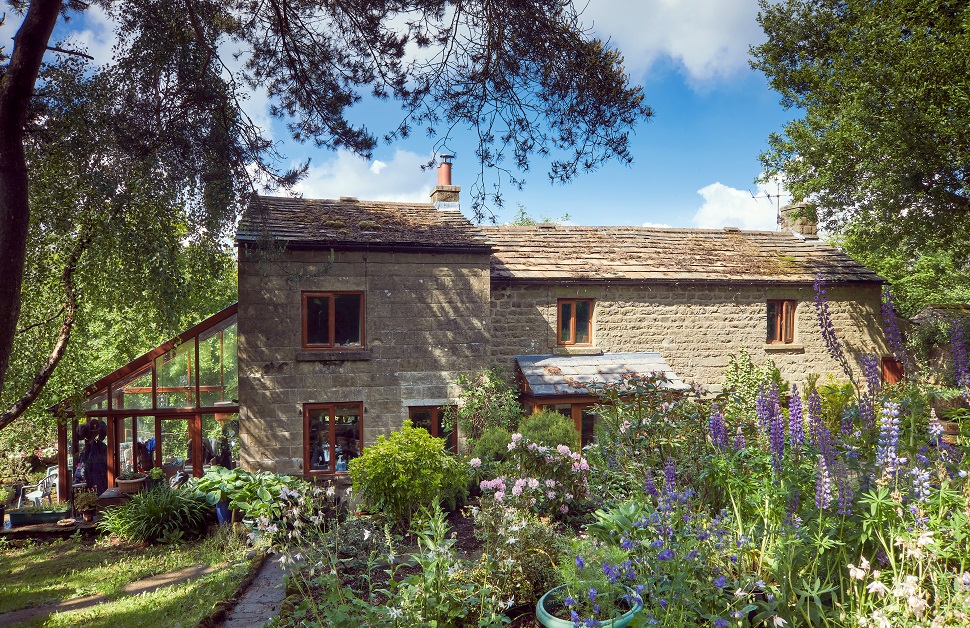
For all the overwhelming range offered by the modern supermarket (from Egyptian strawberries in winter to Guatemalan peas in the autumn), there is still something to be said for the joy of growing your own produce on your own plot of land.
Whether you’re a budding horticulturalist who’s caught the bug for growing your own vegetables over lockdown, or a seasoned gardener looking to go self-sufficient, a smallholding could be the ideal way for you to get closer to nature. It won’t necessarily be easy, but smallholdings can offer an incredibly rewarding lifestyle.
Fresh, seasonal, environmentally-friendly produce for your table might be the result, but for many smallholders the joy is in the process.
With that seed planted in your mind, read on to find out exactly what a smallholding is, what you can grow and what you want to keep on it, and how to set one up once you’ve found your dream plot.
What is a smallholding?
A smallholding is a home with a piece of land larger than a garden but smaller than most farms. This land can be used to grow crops or rear animals. Generally acknowledged to be anything with fewer than 50 acres of land, smallholdings can range from small, allotment-style plots to, essentially, small mixed farms. As there’s no legal definition, the lines between garden, smallholding and small farm can be blurred, but smallholdings can be divided into ‘subsistence’ (growing solely for the needs of the residents) or ‘cash crop’ (growing for profit in an area that possesses opportunities for favourable income potential), or sometimes a mix of both.
How much land you’ll need will depend on the balance between subsistence and cash crop farming that you’re going to be doing, as well as what you’re going to be growing. If you’re only producing for yourself and your family, you’ll need around five acres of land. There really is no set formula for the amount of land, though you should consider some factors:
How much time you want to spend on the land:
If you’re a hobbyist who’ll be working a full-time job on top of managing your smallholding you should probably look at a smaller, more manageable plot. Conversely, those who are going to be focussing the majority of their time and energy on their own land might want a larger plot to plan and grow into. Either way, there’s a suitable large or small plot out there for you, whatever your needs.
Whether you’re going to be growing to earn money:
Growing or rearing a surplus to sell for profit can be a rewarding way to fund your smallholding. In fact, it may even be more profitable long-term than deciding to sell land that is situated in a valuable or popular area that holds favourable income potential. You’ll need plenty of space for future growth, but the importance of diligent planning and how you use the land can’t be understated.
How you use the land:
One of the benefits of having a smallholding can be how productively and efficiently you can use the space. Smallholdings can be more productive per acre than larger farms because they often have many uses for the same patch of land (e.g. an orchard with animals and bees in).[1] Indeed, a 2008 study from Bard College, New York, showed a strong negative correlation between farm size and yield. In a case study, farms of fewer than one hectare were twenty times as productive, per hectare, than farms of over ten hectares.[2] This means with the right care and attention, you can do more than you think with your land.

What can I keep on my smallholding?
As a smallholder, you’re free to grow what you want on your plot of land. One of the upsides of having a smallholding can be the variety of produce that you grow throughout the year, and you’re really only limited by your own imagination and the land that you’re growing on. Various soil types (e.g. sandy, clay, silt) will suit various species of crop and it’s worth experimenting with to see how each one does. Part of the beauty of being a smallholder is getting to know your land and what can be grown on it.
If you’re looking to keep livestock and rear animals, there is a certain amount of admin as registration with the pertinent authorities is a must. See the next section for details.
If it is your intention to keep livestock, it can be a lot of work, so we recommend that if you’re new to smallholding you start small and ramp up once you’ve got the hang of things. Chickens are a great place to start: cheap, easily looked after, and producing an egg per hen per day.
Another choice is grazing animals like geese and sheep: they can take care of your grass as well as providing a source of food. Goats, too, though they have to be managed carefully to prevent them from eating your crops.
How much does it cost to set up a smallholding and what are the legalities?
On top of the cost of the land itself, there are a few barriers to entry to starting a smallholding. These can be split into two categories: start-up costs and legal admin.
Some start-up costs include:
- Buying the tools and equipment you’ll need. These could be for dealing with crops or animals, or just managing the land (second hand or shared tools are also available if you’re trying to cut costs; the smallholding community can be very generous!).
- Materials to build fences and animal housing, or plant beds (using recycled materials here can save costs).
- Labour costs to prepare the land for planting and grazing. New plots won’t be clear, verdant pasture but will probably have stones or weeds which will have to be cleared (you can do this yourself but will still have to pay for waste disposal).
This may seem like a lot, and the initial outlay shouldn’t be underestimated. However, a well-planned initial investment will last you well into the future and be worth it long term. Many opt to browse smallholdings for sale in order to get a head start on their smallholding journey.
Legal requirements mostly apply if you’re: a) keeping animals, and b) looking to sell the products of those animals on. If you ‘prepare, store and sell food’ you’ll have to register with your local environmental health department.[3] Some of the other agencies with which you’ll have to register are:
- DEFRA (Dept. for Environment, Food & Rural Affairs): if you want to keep sheep, goats or pigs.
- Animal and Plant Health Agency: pigs, cattle, and large flocks of poultry.
Rural Payments Agency: you’ll have to obtain a County Parish Holding (CPH) number from here. - Food Standards Agency (in England and Wales) or the local environmental health department: if you want to produce and sell milk.
- AHDB Potatoes: if you grow three or more land hectares of potatoes you’ll have to register and pay an annual levy.
All this can sound overwhelming, and it will be a lot of work initially, but with a good amount of planning, setting a smallholding can be a truly rewarding process. Once things are up and running, a smallholding really is a lifestyle, one that can take you from the turbulence of the modern city and closer to the pastoral idylls of yesteryear (albeit with wellies and waterproofs!).
Wherever you are in your journey towards ‘The Good Life’, Addland makes it easy to find, research, buy and sell land, and unlike most estate agents, they even offer the option to purchase land smallholdings. On their website, you will find a list of all current smallholdings for sale in a dedicated section.
Key points:
- As a rule of thumb, the average family can be self-sufficient on five acres of land.
- If you want to rear animals then you’ll have to register with the specific authority. You’ll also need a County Parish Holding (CPH) number, which registers you to keep livestock.
- If you want to sell the products of your smallholding you’ll have to register with appropriate environmental health authorities.
- There are numerous courses available to learn how to grow crops and rear animals.

FAQs
Do I need any farming experience to be a smallholder?
Not necessarily – anyone can learn the skills they need without any background experience. However, don’t forget that being a smallholder is a huge commitment, so it won’t hurt to get a feel for how the lifestyle suits you before jumping all in. Plenty of smallholdings and rural properties such as small or large farms across the country have opportunities for volunteers to work on site, and many even run courses designed to help prepare budding smallholders for the challenges ahead.
Alternatively, you could hire a farmer to carry out the agricultural tasks on the land and pay them either on a contract basis or with a percentage of profits from the land. You can do this by doing your research prior to completing the purchase of any smallholdings for sale via an estate agent and reaching out to local communities in the nearby area.
Will I need planning permission for a smallholding?
You won’t need planning permission for any of the usual farming operations on your site, providing it’s already classed as agricultural land. But if you’re proposing to erect any permanent buildings on your land, whether for a small scale agriculture or residential purpose, you’ll need to apply for planning consent.
As always with planning permission, contact your Local Planning Authority before starting any work to be sure of what’s permitted and what isn’t. Likewise, you may be able to gain further information from the estate agents or landowner you’re buying from.
Can I sell produce from my smallholding?
Absolutely! Selling your surplus produce can be a great way to recoup some of your project’s start-up costs, and there’s always a market for locally-produced food. However, if you’re going to turn your smallholding into a business you’ll need to be registered with your local environmental health department and comply with food safety and hygiene regulations. Contact your local authority to find out exactly what action you’ll need to take.
[1] https://www.lowimpact.org/lowimpact-topic/smallholding/
[2] http://www.levyinstitute.org/pubs/wp_551.pdf
[3] https://www.lawdonut.co.uk/business/sector-specific-law/smallholding-legal-issues

If I buy a small holding and don’t want to keep animals do I have to “deregister” or does the seller do that ?
This is great information, I own 10 acres of land but require additional buildings for stock feed and shelter for my animals . I will have goats , pigs , geese , chickens and more than likely a highlander .
I am registering for a cph number , I am unsure where to go from here in regards to additional buildings without going the planning permission route . What is the largest size I can build without planning permission? I am struggling to find a defined answer . We want to be fully self sufficient. We are looking a solar and wind generation, any help with the way to go with this ? Thank you
Thank you. Interesting article. A
What do I do if I can’t afford land?
I don’t enjoy my life and idk what to do anymore